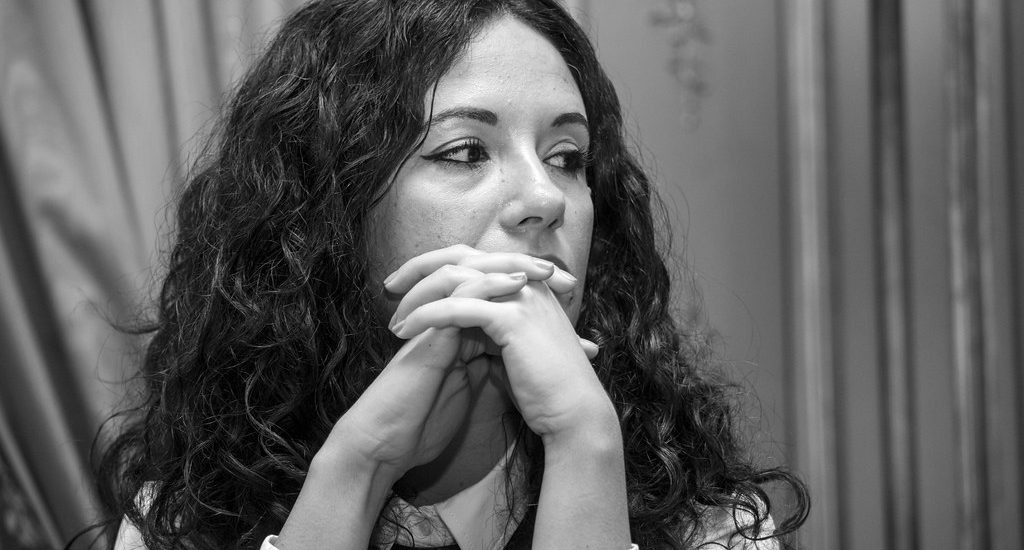Dr. Sonia Betancort is professor of language and literature at Camilo José Cela University in Madrid. For years she has devoted herself to teaching her students the literary impact and ideas of Jorge Luis Borges, one of the first postcolonial Argentinian authors to engage seriously with Buddhism and Asian thought. She has contributed to our Spanish-language website, BDE, and I am always interested in learning about how countries in the Global South, like Argentina, have approached Buddhism. For this weekend read, I approached the professor to discuss more about exactly that in this interview.
BDG: When you introduce Borges to your students, how do they react when you reveal to them his Buddhist connections? How do you help your class bridge Borges’ ties between European and Asian thought?
Sonia Betancort: Thank you very much for this encounter once again.
Generally, I do not usually force an interpretation on my students. I let them do their reading of the texts. I believe that good literature admits infinite ways of reading. With my students, I learn to what extent their their experiences build a perspective on life. Even if it doesn’t match the established literature, the manuals, or my ideas, I think it is a beautiful exercise of freedom. I think that’s learning.
But when I share my interpretation of Borges and Buddhism, surprise is the norm. I have noticed that, at least for a decade, this theme has been generating more interest. There is a tendency to reflect on multiculturalism or cosmopolitanism in the field of literature in Spanish. Because of that, an initially specific theme becomes a fascinating connection. On the other hand, dealing with subjects like spirituality and psychology creates a different atmosphere in the classroom. I think the students love it because, in some way, they can think about their own lives and how they can learn more consciously. Every year, I see people develop psychologically, and that’s wonderful.
BDG: Each intellectual generation builds on its past titans. As a Borges expert and specialist, have you tried to expand on Borges’ ideas about Buddhism for the 21st century? How does Borges have potential or relevance to Argentinian understandings of Buddhism today?
SB: Borges is probably one of the most widely-read Latin American writers today. Although his literature is part of a cultured and scholarly model, many in the present refer to him, both inside and outside Buddhist practice and Buddhist studies. Scholars, writers, artists, and philosophers have interpreted his figure as being one of the most relevant in the canon of universal literature and thought. Critics such as Mateu Calinescu or Harold Bloom have spoken of him as a model of postmodernism and part of the Western canon, from the literature on paper to digital products. He has also been recognized in Asia.
Sooner or later, when there is a discussion about the Eastern influence in the Hispanic world, Borges’ stories or his essay What is Buddhism are taken as a paradigm. British scholar Peter Harvey, for example, comments that in the literary field, Borges is the Ibero-American exponent of Buddhism of the last century. Some teachers of the Buddhist tradition in Latin America also cite his essay to articulate complex concepts creatively.

BDG: You have written and published poetry; you’re a poet deep at heart. Can you highlight some recurring themes that you find yourself returning to?
SB: I think my poetry develops different themes in each of my books. But some reflections are repeated. Perhaps I could mention the world of polarity and its transcendence, the questioning of the self, the changing and diffuse nature of reality, and the power of poetry to bring us together and help us overcome suffering.
BDG: You published a book of poems called La sonrisa de Audrey Hepburn (The Smile of Audrey Hepburn), which has combined ideas about naturalness in Hepburn and Laozi to form moving verses like, “Under a tenuous disguise of frivolity, the poet has built a life brief, a wise book: “I have not been innocent, and yet / I have never been able to love anything far from innocence.”
Can you explain a bit further the ideas you explore in this book?
SB: I believe that the specular and illusory essence of art, in general, but cinema in particular, has many connections with the nature of the world. Through poetry, imagination, and working with emotions, my book aims to investigate how human beings possess something luminous and invulnerable, capable of transmuting suffering.
Biographer and theologian Donald Spoto wrote that Audrey Hepburn died with a smile and a small tear in the corner of her eye. That reconciling image acts as a metaphor in my book.
In contrast to the iconic, sometimes superfluous figure she cut in popular culture, Audrey had great depth and an unwavering capacity for resilience. When she left Hollywood to pursue humanitarian work, she demonstrated a social and spiritual commitment I admire. Through some of the characters in her films, the poems allowed me to play at being other people. In that way, I felt like I renounced myself. In my interpretation, my book attempted to explore how identity is not a firm reality but a game of mirrors.
The first poem ends by saying: I dream of being nobody after being lots. The dazzling Audrey Hepburn’s smile is many smiles: that of brave girls and women, that of my mother, my sisters, my grandparents, that of many writers, and hopefully that of the readers. A smile that sustains, almost unnoticed, a tear in the corner of the eye. Because living for me, like writing, is a puzzle of apparent opposites.
BDG: What motifs, imagery, and archetypes do you find particularly powerful in fantasy and mythology? Which ones continue to inspire you in your research or classes?
SB: I am very interested in myths and symbols of Asian cultures, especially Hinduism and Buddhism. Those who I studied the most are the Hindu Trinity (Siva, Vishnu, and Brahma), the legendary Buddha, and some Bodhisattvas and Tibetan Buddhas (Amitabha, Avalokiteshvara, Vajrasattva). These mythologies are very present in Hispanic authors of the last century. Particularly, through mysticism, they find similarities in our distant continents.
One of the aspects that most attracts me to these mythologies is its conciliatory ideas. They grant each human being the responsibility to build an individual experience that results in a more empathetic and harmonious coexistence with all beings, including nature. I am amazed at Oriental thought’s ancient and profound perspective on the mind, its respect for beings and the environment, and the ethics that emerges from its philosophy.
Borges said that all the possible philosophies, from materialism to idealism, were imagined in India and China. It is a surprising point of view that I share. Perhaps the East fascinates us because by appearing strange and distant, paradoxically, it reveals what we are.
Related features from BDE
Meditaciones de un “jardín interior del que nadie está privado”: budismo, feminismo y ecología en Alicia Jurado. Segunda parte
Meditaciones de un “jardín interior del que nadie está privado”: budismo, feminismo y ecología en Alicia Jurado. Primera parte
Borges y el budismo: leyenda, literatura y vida*
Related blog posts from BDG
She Speaks: Argentine Literary Engagement with Buddhism, with Sonia Betancort


